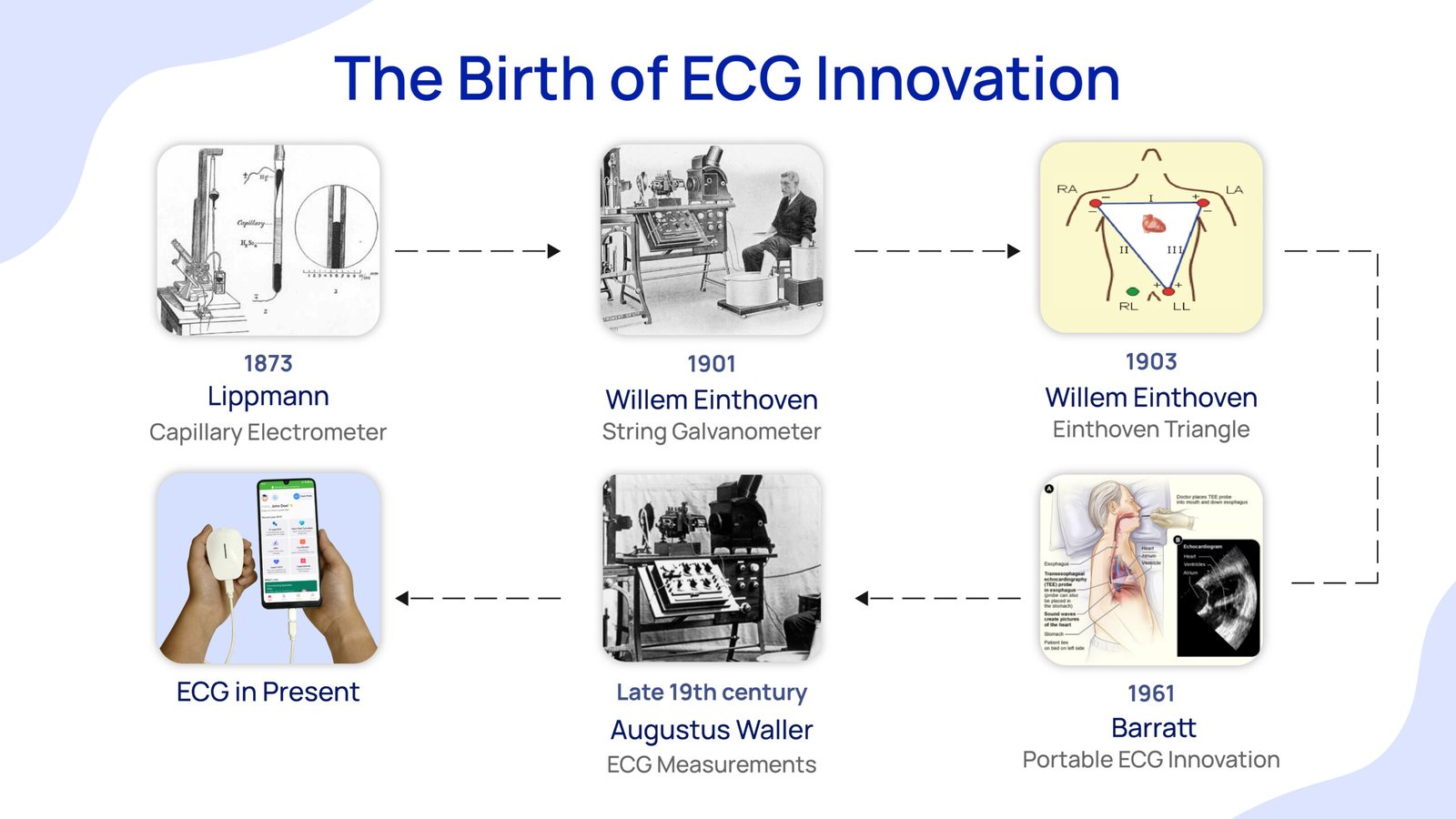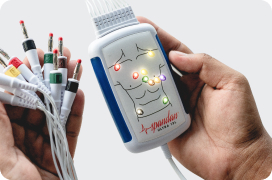
Author:- Mr. Ritesh Sharma
An electrocardiogram is a device that is used to measure the human heart’s electrical activity over a period of time. However, do you know the history of ECG? The device that has diagnosed thousands of heart abnormalities ranging from cardiac arrhythmias to heart attacks for more than a century started from scratch back in 1911. In an era where heart problems are the leading cause of death worldwide, the importance of ECG can simply not be overstated.
So, it goes without saying that the history of such a pivotal device in the realm of cardiac care never fails to pique the interest of people. Are you also interested in learning the complete history of the miracle of medical equipment electrocardiogram? Then check out this complete blog..
How ECG was Born?
The history of ECG spanned decades before the first diagnostic test happened. The human heart has always captivated the minds of scholars and physicians. However, it was the Dutch scientist Willem Einthoven who was able to materialize a scientific invention that altered the domain of healthcare forever. But as they say, any invention is a collective effort, many other scientists laid the foundation for this invention that diagnoses heart problems within a few minutes nowadays.
In the 17th century, William Harvey’s groundbreaking work on blood circulation laid the foundation for understanding the heart’s mechanical function. Following this, several inventions paved the way for several scientific breakthroughs in the field of medicine and healthcare. However, it was not until the 19th century that the thought of diagnosing the heart’s activity came to the minds of exceptional scientists.
The History of ECG Breakthrough
In the 19th century, Gabriel Lippman came up with a device called a capillary electrometer. This was the year 1872. While this invention might have not been considered a groundbreaking discovery initially, it paved the way for electrocardiograms to flourish in the latter centuries. Through this staggering device, scientists could measure the voltage changes on the body’s surface which are produced by the pulse of the heart. Although this astounding invention belonged to Lippman, it was A.D. Waller who used it in the year 1887 to capture the first accurate measurement of a heart’s beating. Hence the later 19th century had set the stage for an innovation that would save millions of lives in the future. While the scientists of this era created something innovative for the time, they grappled with the conundrum of inertia and friction inside the heart’s capillaries. The genius mind of Dutch scientist Willem Einthoven rectified in 1901 and laid the groundwork for the innovation of the electrocardiogram.
The Emergence of Electrocardiography
It was the dawn of the 20th century and the realm of scientific innovations was ripe for a new medical miracle. Among the big pioneers of this era, the big name Willem Einthoven came forward. Since the beginning of this century, Einthoven has been inclined towards revolutionizing cardiac care. In 1903, he created a device called a galvanometer. This device was capable of recording the electrical signals produced by the heart echoing the function of an electrocardiogram. Now that Einthoven innovated a device capturing the heart’s electrical signals, he was more allured by the enigmatic electrical activity of the heart.
With his newfound tool, Einthoven embarked on a journey to revolutionize cardiac care. He conducted experiments, in which, he attached electrodes to both his arms and left leg. This arrangement was later termed Einthoven’s triangle. In this arrangement, the electrode vessels were filled with saline that was to be bathed with each part of the triangle. In other words, patients had to dip their hands and food into the buckets filled with saline for the heart test.
The First ECG Test
In 1909, the history of ECG took a big stride when Einthoven further innovated his device to detect arrhythmias of different arrhythmia classifications. However, just a year later, Einthoven made some alterations to the device through which it could find the high rounded plateaus suggestive of a heart attack. Now, the ECG device was ready to be tested. In 1911, Cambridge Scientific Instrument Company of London — co-founded in 1881 by Charles Darwin’s youngest son, Horace — constructed the first table model of Einthoven’s electrocardiogram.
The weight of this ECG device was 600 pounds and 5 people were required to operate it properly. From 600 pounds to 8 pounds, ECG sure has come a long way in the field of cardiac care. But without the astounding innovation by Willem Einthoven and worthy contributions by other scientists for centuries, none of this would be possible.
Contemporary Applications and Future Prospects
Today, the ECG as we see it has come, so far. Along with the continuous innovations in traditional ECG monitoring, the invention of portable ECG machines serves as a beacon of hope in the mission of decreasing fatal heart problems. With a promise of further innovation and refinement, the electrocardiogram only promises to deliver better and more accurate results than ever before.
However, no matter how far the technological advancements take the electrocardiogram, the contributions of the nobel prize winner and creator of this miracle Willem Einthoven shall never be forgotten. He is name ingrained in the history of ECG Had he not invented that 600-pound heavy ECG machine, the 12-14 gram portable ECG machines would not be saving the lives of millions of people today.




